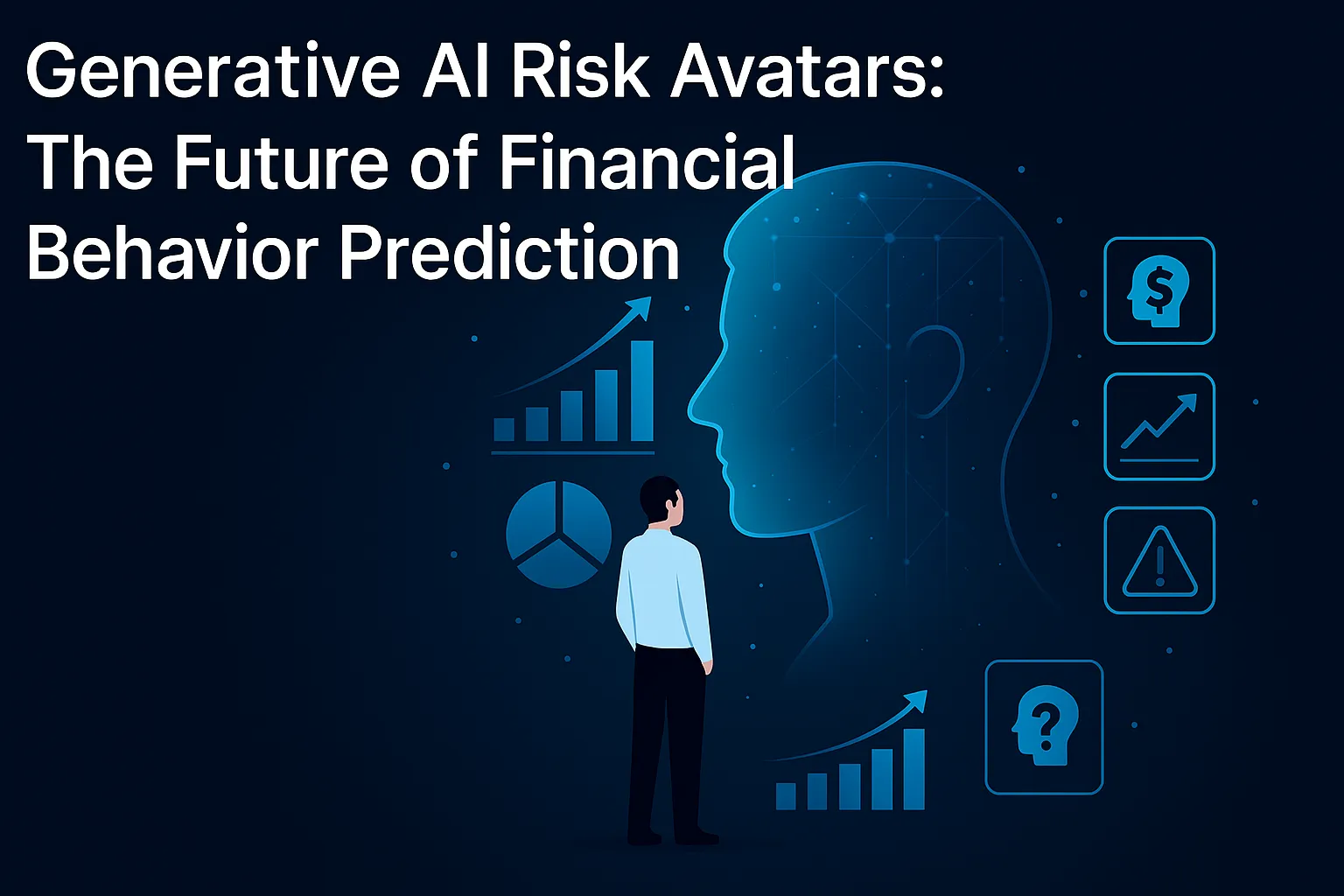
Generative AI Risk Avatars: The Future of Financial Behavior Prediction
As artificial intelligence transforms finance, generative AI risk avatars are emerging as a futuristic innovation. These intelligent, self-evolving personas simulate financial behavior and decision-making, offering a new lens for prediction and planning. In this guide, we’ll explore what generative AI risk avatars are, how they work, and why they could reshape the future of finance.
What Are Generative AI Risk Avatars?
These are synthetic digital profiles powered by AI that predict user behavior in financial contexts. Unlike static models, these avatars adapt, evolve, and simulate decisions based on data inputs and psychological patterns.
Core Features-Generative AI Risk Avatars
- Predictive modeling of financial habits
- Simulation of emotional triggers and biases
- Real-time risk analysis across scenarios
- Continuous learning based on behavior
Why Generative AI Risk Avatars Matter in Finance
By fusing behavioral finance and generative AI, generative AI risk avatars become tools for forecasting choices, optimizing strategies, and educating users across sectors—personal finance, trading, insurance, and more.
Key Benefits
- Financial behavior visualization
- Scenario planning with emotional context
- Enhanced decision-making support
How Generative AI Risk Avatars Work
Technologies Used
- Generative Adversarial Networks (GANs)
- Reinforcement learning
- Natural Language Processing (NLP)
- Behavioral heuristics modeling
Data Inputs
- Spending history
- Investment behavior
- Savings goals
- Risk tolerance and emotional reactions
Applications in Personal Finance
1. Financial Education
Avatars simulate how poor spending decisions impact long-term goals, making financial literacy interactive and intuitive.
2. Credit Scoring & Lending
Unlike static credit scores, avatars project future behavior for lenders—adding depth to risk assessment.
3. Insurance Underwriting
They help insurers predict consumer risk profiles and personalize coverage before a claim ever occurs.
Behavioral Trading Simulation
| Trader Type | Avatar Prediction | Platform Recommendation |
|---|---|---|
| Emotional Buyer | Buys during hype, sells early | Suggests stable asset plans |
| Risk Lover | Overtrades in volatility | Triggers limit alerts |
| Passive Investor | Delays action | Recommends goal-based automation |
Generative AI Risk Avatars vs Traditional Models
| Feature | Traditional Models | Risk Avatars |
|---|---|---|
| Behavioral Simulation | Absent | Central |
| Adaptability | Fixed parameters | Real-time learning |
| Emotional Intelligence | Limited | Deep profiling |
Ethical & Privacy Concerns
Important Issues
- User consent for sensitive data
- Maintaining financial autonomy despite AI guidance
SEO Tips for WordPress Publishing
- Use focus keyword generative AI risk avatars in title, headings, metadata
- Keep keyword density around 1.99%
- Short paragraphs and bullet points for mobile readability
- Link internally to articles on generative AI and behavioral finance
Future of Risk Avatars in Finance
Expect to see generative AI risk avatars embedded in budgeting apps, robo-advisors, and trading platforms. These avatars will guide users with daily prompts, life-event planning, and behavior tracking—ushering in a new era of proactive financial intelligence.
Monetization Ideas
- Subscription-based avatar coaching
- Licensing avatar models to fintechs
- Premium forecasting tools for enterprise clients
Conclusion
Generative AI risk avatars represent a powerful evolution in predictive finance—bridging psychology, technology, and strategy. Whether you’re a financial blogger, startup founder, or curious learner, embracing this innovation positions you ahead of the curve.
Start exploring today. The future isn’t just automated—it’s emotionally aware and behaviorally intelligent.
Frequently Asked Questions
🔹 What are generative AI risk avatars?
Generative AI risk avatars are dynamic digital profiles powered by AI that simulate individual financial behavior, decision-making patterns, and risk responses under various scenarios. They’re used to forecast outcomes and enhance personalized financial planning.
🔹 How do generative AI risk avatars differ from robo-advisors?
Unlike robo-advisors—which follow pre-set algorithms—risk avatars evolve based on behavior, emotions, and feedback loops. They model complex psychological traits, offering deeper insights for finance forecasting.
🔹 Can generative AI risk avatars help me improve financial decisions?
Yes. By visualizing outcomes before decisions are made, these avatars encourage smarter budgeting, investment strategies, and goal setting tailored to your personality and risk profile.
🔹 Are risk avatars safe for financial data?
Top platforms use secure protocols, encryption, and user consent mechanisms. Always check a provider’s privacy and security policies before sharing sensitive financial data.
🔹 What industries use generative AI risk avatars?
They’re being explored in personal finance apps, insurance underwriting, credit scoring, trading platforms, and fintech startups focused on behavioral modeling.
Disclaimer
This article relies on internal data, publicly available information, and other reliable sources. It may also include the authors’ personal views. However, it’s essential to note that the information is for general, educational, and awareness purposes only—it doesn’t disclose every material fact. This analysis is for informational purposes only and does not constitute financial advice. Consult a professional before making investment decisions.
We publish information on World Virtual CFO in good faith, solely for general information. World Virtual CFO doesn’t guarantee the completeness, reliability, or accuracy of this information. These are our views for informational purposes. When you use our website, know that any action you take is entirely at your own risk. World Virtual CFO won’t be liable for any losses or damages connected to your use of our website. For detailed information, refer to our disclaimer page.
Dr. Dinesh Sharma is an award-winning CFO and AI strategist with over two decades of experience in financial leadership, digital transformation, and business optimization. As the founder of multiple niche platforms—including WorldVirtualCFO.com—he empowers professionals and organizations with strategic insights, system structuring, and innovative tools for sustainable growth. His blogs and e-books blend precision with vision, making complex financial and technological concepts accessible and actionable.

2 thoughts on “Generative AI Risk Avatars in Finance: Know All About Now”